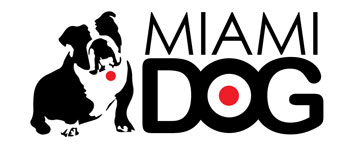
That doggie unicorn who doesn’t shed at all really doesn’t exist.
A dog may shed seasonally once or twice a year — or even all year round. But there are some dogs who do shed much less than others. How much mixed breeds shed depends on genetics.
What genes control shedding in dogs?
Dr. Jerold S. Bell, adjunct professor of genetics in the Cummings School of Veterinary Medicine at Tufts University, says that there are several genes that control shedding in dogs, and they interact with each other.
When dogs have two copies of the high-shedding variant of the MC5R gene, they shed the most. Dogs with one high-shedding copy and one low-shedding copy are moderate shedders, and dogs with two of the low-shedding genes are low shedders. He says most Poodles have two copies of the low-shedding genes.
The RSPO2 furnishings gene (dictating whiskers and eyebrows) interacts with the MC5R gene. Dr. Bell says that because the furnishings gene is dominant, dogs with one or two copies have furnishings (longer whiskers and eyebrows), and dogs with no copies have smooth faces. And if a dog has furnishings, she is less prone to shed — especially with one or two copies of the MC5R low-shedding gene.
The KRT71 gene, which controls curly vs. straight coat, also plays a role in shedding. Dr. Bell says curly is dominant, so it only requires one copy of the gene. Dogs with curly coats tend to be low shedders. Plus, there are other genes — like FGF5 for hair length — that also influence shedding.
Low-shedding dogs
Though there are no true non-shedding mixed breed dogs, or purebreds for that matter, there are low shedders.
Dr. Bell says that dog breeds with furnishings traditionally are low shedders, and having a curly coat makes them shed even less.
Low-shedding dog breeds include:
- Poodles
- Bichon Frise´
- Havanese
- Schnauzer
- Brussels Griffon
- Portuguese Water Dog
When it comes to mixed breed dogs, Dr. Bell says it depends on the genetics of the parents, and there are no guarantees simply based on dog breed for lower shedding.
“None guarantees low/no shedding, as some Poodles — and other curly dogs — have only one copy of the furnishings or curly gene,” he says. “Only half of their offspring — when mated to a dog without the furnishings gene — will have a curly, non/low-shed coat.”
Dr. Jessica Hekman, a behavioral geneticist in New Hampshire and founder of the Functional Dog Collaborative (FDC) says mixed-breed dogs with some Poodle lineage may be high or low shedding, depending on which gene versions they inherited.
“In general, breeds that have ‘furnishings’ plus a long coat tend to produce dogs that shed a lot less than otherwise,” she says. “There are no true no-shedding breeds. Hair is going to grow and eventually come off.”
She says many breeders produce multi-generation Oodles (Poodle mixes) in which they select for the lowest possible shedding coat using genetic testing. Dr. Hekman says Poodles mixed with Golden Retrievers produce lower shedding dogs than Golden Retrievers alone. But she emphasizes it’s not so much about the breed as much as the furnishings and long-hair genetics. So even a Poodle mix can be high shedding depending on the genetics.
Shedding light on dog fur
Whether a dog is a high or low shedder depends on genetics more so than a specific dog breed. A mixed breed may inherit genes that will result in less shedding — or more shedding. If you are looking for a low-shedding dog, get to know dog breeders who specialize in less shed. Or you can take a chance on a randomly mixed breed, and you might win the low-shedding lottery. Or not.
